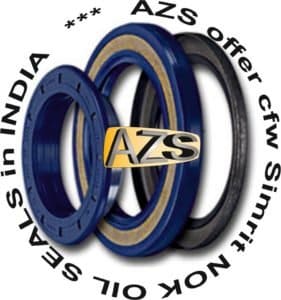Unveiling the Dynamics of Oil Seals in Mechanical Systems. A2Z SEALS offer Also see NOK metric shaft seal along with seals of the following brands

- CFW
- SOG
- NOK
- Parker
- freudenberg
- Simrit
- Corteco
- TTO
- TCK
- CR
- NOK
- NAK
- Parker
- NDK
- Merkel
- National
- CHR
Also explore the best quality Seal Kits & Oil Seal, CFW Oil Seals, NOK Oil Seals, and Crane Seal Kits.
Download A2Z Seal Kits Catalog
General studies of Seals 3 Metric Shaft Seal
In the intricate tapestry of mechanical systems, the role of oil seals is paramount. These often-overlooked components play a crucial role in ensuring the smooth and efficient operation of machinery by preventing leaks and contamination. This thesis explores the multifaceted aspects of oil seals, from their historical evolution to contemporary applications, shedding light on their significance in the realm of mechanical engineering.
Background and Context:
Oil seals, also known as shaft seals or rotary seals, are essential components employed in mechanical systems to prevent the leakage of fluids and the ingress of contaminants. Their role in maintaining the integrity of machinery cannot be overstated, as they contribute to the longevity and efficiency of various applications.
Importance of Effective Sealing:
Effective sealing is the linchpin of machinery functionality. A failure in the sealing mechanism can lead to lubricant leakage, increased friction, and, consequently, the accelerated wear and tear of critical components. The economic and operational implications of such failures underscore the vital importance of reliable oil seals.
Overview of Role in Preventing Leaks and Contamination:
Oil seals act as barriers, creating a secure boundary between different components within a mechanical system. By preventing the escape of lubricants and blocking the entry of contaminants such as dust and water, they ensure the optimal performance and durability of machinery.
Also see NOK metric shaft seal
Literature Review:
Historical Development:
The evolution of oil seals can be traced back to early mechanical systems where the need for efficient sealing became evident. Over time, advancements in materials and manufacturing processes have contributed to the refinement of these essential components.
Types and Classifications:
A diverse array of oil seals exists, each tailored to specific applications. These include lip seals, mechanical seals, and various specialized variations designed to meet the unique challenges posed by different operating conditions.
Materials Used in Manufacturing:
The choice of materials in oil seal construction is critical to their performance. Common materials include rubber, elastomers, and synthetic compounds, each selected for its compatibility with specific environments and operating conditions.
Also see NOK metric shaft seal
Previous Research:
A comprehensive review of previous research provides insights into the performance and characteristics of oil seals. Understanding the challenges and innovations from past studies informs the current state of knowledge and highlights areas for further exploration.
Applications and Industries:
Oil seals find applications across diverse industries, including automotive, industrial, and aerospace sectors. Their adaptability and effectiveness make them integral components in a wide range of machinery and equipment.
